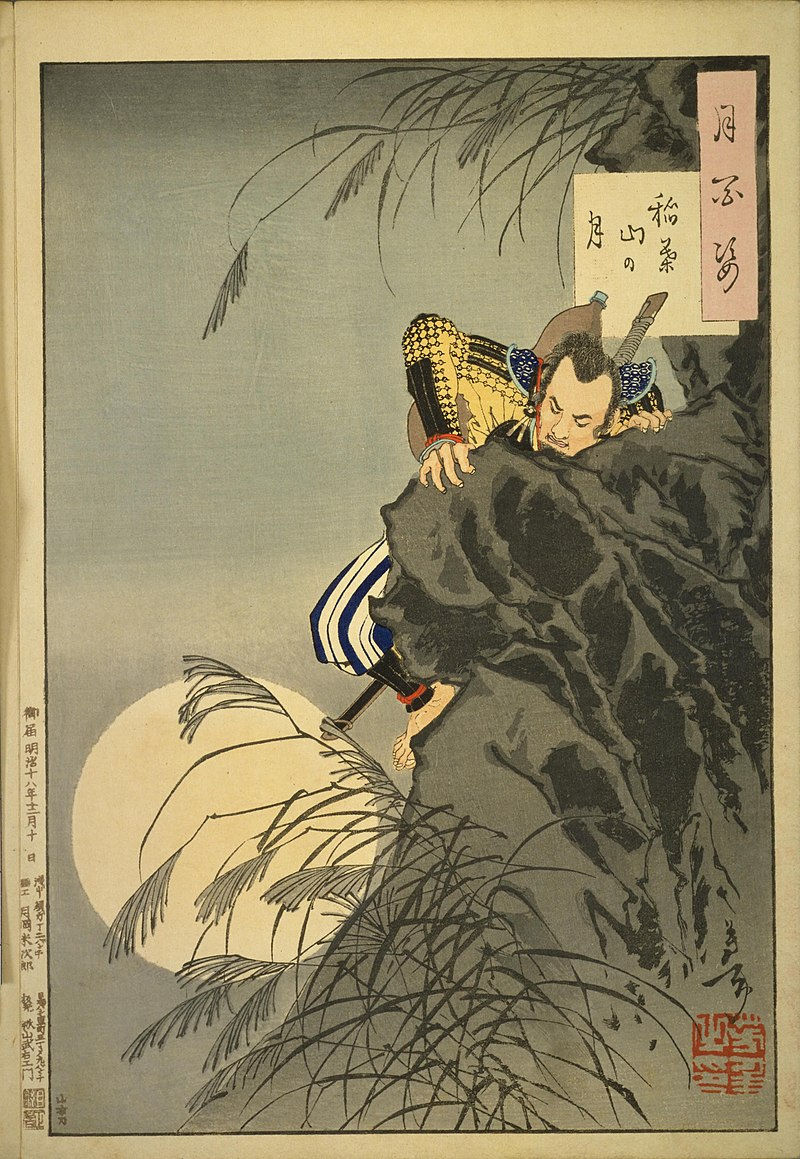Shogunate
- 2304583d
- Aug 5, 2024
- 9 min read
Updated: Aug 9, 2024
A Shogunate or Bakufu (幕府), meaning ‘tent government’ or a military government, referred to the military and administrative system established by a Shogun.
Under a Shogunate, the Emperors of Japan would be relegated to the role of a ceremonial leader while the Shogun would act as the de facto ruler of Japan.
Military Leadership: The shogun was the highest-ranking military official, often exercising political power and control over the samurai class.
Centralized Control: The shogunate established a centralized government, maintaining power through a network of daimyo (feudal lords) and samurai.
Economic Management: Shogunates controlled land distribution, tax collection, and trade policies, crucial for maintaining their power and the country's stability.
Diplomatic Relations: Shogunates managed foreign relations and defense, including policies of isolation or engagement with other countries.

The Kamakura Shogunate (鎌倉幕府)
The Kamakura Shogunate (1185–1333) was the first military government (bakufu) established in Japan. It marked a significant shift from the imperial court's dominance to a feudal system controlled by the samurai class. The shogunate was established by Minamoto no Yoritomo and saw the rise and eventual decline of the Minamoto clan, the dominance of the Hōjō regents, and the challenges it faced from internal and external threats.
Origins and Establishment
The Genpei War (1180–1185):
Background: The Genpei War was a conflict between the Taira and Minamoto clans. The Taira had dominated the imperial court, but the Minamoto clan, under Minamoto no Yoritomo, sought to overthrow them.
Key Battles: Significant battles included the Battle of Dan-no-ura in 1185, which resulted in the decisive defeat of the Taira and the rise of the Minamoto clan.
Formation of the Shogunate:
Background: The Genpei War was a conflict between the Taira and Minamoto clans. The Taira had dominated the imperial court, but the Minamoto clan, under Minamoto no Yoritomo, sought to overthrow them.
Key Battles: Significant battles included the Battle of Dan-no-ura in 1185, which resulted in the decisive defeat of the Taira and the rise of the Minamoto clan.
Hōjō Regency and Monopolization of Power
Minamoto Decline and Hōjō Ascendancy:
Early Deaths: The early deaths of Yoritomo in 1199 and his sons Minamoto no Yoriie and Minamoto no Sanetomo left a power vacuum.
Hōjō Masako: Yoritomo's widow, Hōjō Masako, and her father, Hōjō Tokimasa, seized the opportunity to control the shogunate. The Hōjō clan effectively took over the regency, initially as guardians of the young shoguns.
Shikken (Regent) System:
Early Deaths: The early deaths of Yoritomo in 1199 and his sons Minamoto no Yoriie and Minamoto no Sanetomo left a power vacuum.
Hōjō Masako: Yoritomo's widow, Hōjō Masako, and her father, Hōjō Tokimasa, seized the opportunity to control the shogunate. The Hōjō clan effectively took over the regency, initially as guardians of the young shoguns.
Jōkyū Disturbance and Mongol Invasions
Jōkyū Disturbance (1221):
Rebellion: Emperor Go-Toba, dissatisfied with the Hōjō regency, attempted to overthrow the Kamakura Shogunate in the Jōkyū Disturbance.
Outcome: The Hōjō forces, led by Hōjō Yoshitoki, decisively defeated the imperial forces. The result solidified the shogunate's power and led to the exile of Go-Toba.
Mongol Invasions (1274 and 1281):
Rebellion: Emperor Go-Toba, dissatisfied with the Hōjō regency, attempted to overthrow the Kamakura Shogunate in the Jōkyū Disturbance.
Outcome: The Hōjō forces, led by Hōjō Yoshitoki, decisively defeated the imperial forces. The result solidified the shogunate's power and led to the exile of Go-Toba.
Decline and Fall
Internal Strife:
Economic Strain: The costs of defense against the Mongol invasions left the shogunate financially strained.
Samurai Discontent: Many samurai were unhappy due to the lack of rewards for their efforts in repelling the Mongols, leading to growing dissatisfaction.
Kenmu Restoration (1333–1336):
Economic Strain: The costs of defense against the Mongol invasions left the shogunate financially strained.
Samurai Discontent: Many samurai were unhappy due to the lack of rewards for their efforts in repelling the Mongols, leading to growing dissatisfaction.
Summary of the Kamakura
The Kamakura Shogunate was a crucial period in Japanese history, marking the rise of samurai governance and the shift away from imperial rule. The shogunate's establishment by Minamoto no Yoritomo, the consolidation of power by the Hōjō regents, and the challenges faced from both domestic uprisings and foreign invasions illustrate the complex dynamics of this era. The eventual downfall of the shogunate, precipitated by internal strife and the ambitions of figures like Emperor Go-Daigo and Ashikaga Takauji, set the stage for the turbulent Nanboku-chō period and the rise of the Ashikaga Shogunate.

The Ashikaga Shogunate (足利幕府)
The Ashikaga Shogunate (1336–1573), also known as the Muromachi Shogunate, was the second of Japan's three military governments headed by a shogun. It was founded by Ashikaga Takauji, who turned against the imperial court and established a new regime in Kyoto. This period was marked by the Nanboku-chō (Northern and Southern Courts) conflict, the eventual unification under the Northern Court, and the shogunate's gradual decline leading to the Sengoku period. Here's a detailed overview:
Establishment of the Ashikaga Shogunate
Ashikaga Takauji's Betrayal:
Kenmu Restoration (1333–1336): After the fall of the Kamakura Shogunate, Emperor Go-Daigo attempted to restore imperial rule during the Kenmu Restoration. However, his policies alienated the samurai class, which had been accustomed to wielding significant power.
Takauji's Rebellion (1336): Initially, Ashikaga Takauji supported Go-Daigo against the Kamakura Shogunate. However, disillusioned by Go-Daigo's failure to adequately reward his samurai supporters, Takauji turned against the imperial court. In 1336, he captured Kyoto and installed a rival emperor, leading to the establishment of the Northern Court.
Founding of the Shogunate:
Kenmu Restoration (1333–1336): After the fall of the Kamakura Shogunate, Emperor Go-Daigo attempted to restore imperial rule during the Kenmu Restoration. However, his policies alienated the samurai class, which had been accustomed to wielding significant power.
Takauji's Rebellion (1336): Initially, Ashikaga Takauji supported Go-Daigo against the Kamakura Shogunate. However, disillusioned by Go-Daigo's failure to adequately reward his samurai supporters, Takauji turned against the imperial court. In 1336, he captured Kyoto and installed a rival emperor, leading to the establishment of the Northern Court.
Nanboku-chō Period (1336–1392)
Division of Courts:
Southern and Northern Courts: The period saw a prolonged conflict between the Southern Court, loyal to Emperor Go-Daigo and his successors, and the Northern Court, backed by the Ashikaga Shogunate.
War and Diplomacy: The conflict involved military engagements and shifting alliances, with the Ashikaga Shogunate gradually gaining the upper hand.
Unification under the Northern Court:
Southern and Northern Courts: The period saw a prolonged conflict between the Southern Court, loyal to Emperor Go-Daigo and his successors, and the Northern Court, backed by the Ashikaga Shogunate.
War and Diplomacy: The conflict involved military engagements and shifting alliances, with the Ashikaga Shogunate gradually gaining the upper hand.
Ashikaga Shogunate's Decline
Ōnin War (1467–1477):
Civil War: The Ōnin War was a major civil war that devastated Kyoto and marked the beginning of the Sengoku period (Warring States period). It stemmed from a succession dispute within the Ashikaga family and feuds among powerful daimyo.
Collapse of Central Authority: The war weakened the shogunate's authority and led to the rise of regional warlords (daimyo) who effectively ruled their domains independently.
Sengoku Period (1467–1603):
Civil War: The Ōnin War was a major civil war that devastated Kyoto and marked the beginning of the Sengoku period (Warring States period). It stemmed from a succession dispute within the Ashikaga family and feuds among powerful daimyo.
Collapse of Central Authority: The war weakened the shogunate's authority and led to the rise of regional warlords (daimyo) who effectively ruled their domains independently.
End of the Ashikaga Shogunate
Oda Nobunaga's Rise:
Ambitious Warlord: Oda Nobunaga emerged as a powerful daimyo intent on unifying Japan. He began his campaign in the 1550s and rapidly expanded his territory.
Ashikaga Yoshiaki (1568–1573): Nobunaga installed Ashikaga Yoshiaki as the 15th shogun in 1568, hoping to use him as a puppet to legitimize his own power. However, Yoshiaki attempted to undermine Nobunaga, leading to conflict.
Deposition of the Last Ashikaga Shogun (1573):
Ambitious Warlord: Oda Nobunaga emerged as a powerful daimyo intent on unifying Japan. He began his campaign in the 1550s and rapidly expanded his territory.
Ashikaga Yoshiaki (1568–1573): Nobunaga installed Ashikaga Yoshiaki as the 15th shogun in 1568, hoping to use him as a puppet to legitimize his own power. However, Yoshiaki attempted to undermine Nobunaga, leading to conflict.
Summary of the Ashikaga
The Ashikaga Shogunate played a pivotal role in Japanese history, bridging the gap between the Kamakura and Tokugawa periods. Its establishment marked a significant shift in power dynamics, with the military government asserting dominance over the imperial court. Despite initial successes, internal conflicts and external pressures led to its decline, culminating in the chaotic Sengoku period. The shogunate's end came with the rise of powerful warlords like Oda Nobunaga, who sought to bring order to Japan through military conquest and unification. The Ashikaga Shogunate's legacy is a complex interplay of military prowess, political intrigue, and the struggle for centralized authority in medieval Japan.

The Tokugawa Shogunate (徳川幕府)
The Tokugawa Shogunate (1603–1868), also known as the Edo Shogunate, was the final military government in Japan, established by Tokugawa Ieyasu. It ushered in over two centuries of relative peace and stability known as the Edo period. The shogunate implemented several policies to maintain its grip on power and managed internal and external threats until its eventual downfall during the Boshin War.
Establishment of the Tokugawa Shogunate
Battle of Sekigahara (1600):
Victory: Tokugawa Ieyasu's decisive victory at the Battle of Sekigahara against the Western Army led by Ishida Mitsunari established his dominance over Japan.
Shogun Title (1603): In 1603, Ieyasu was appointed Shogun by Emperor Go-Yozei, formally establishing the Tokugawa Shogunate with its capital in Edo (modern-day Tokyo).
Key Policies and Governance
Sakoku (Closed Country Policy):
Isolation: Implemented in the 1630s under Ieyasu’s successors, this policy severely restricted foreign trade and contact. Only a limited number of foreign ships were allowed to trade at designated ports like Nagasaki.
Purpose: The policy aimed to prevent foreign influence and potential threats to Tokugawa rule, particularly from European powers and Christianity.
Sankin-Kotai (Alternate Attendance System):
Requirements: Daimyo (feudal lords) were required to spend alternate years in Edo and their home domains. Their families were held hostage in Edo during their absence.
Control Mechanism: This system ensured loyalty and reduced the likelihood of rebellion by keeping the daimyo under constant surveillance and financially drained due to the costs of the regular trips between their domains to Edo.
Ikkoku Ichijyo Rei (One Castle Per Province Law):
Isolation: Implemented in the 1630s under Ieyasu’s successors, this policy severely restricted foreign trade and contact. Only a limited number of foreign ships were allowed to trade at designated ports like Nagasaki.
Purpose: The policy aimed to prevent foreign influence and potential threats to Tokugawa rule, particularly from European powers and Christianity.
Period of Peace and Stability
Edo Period (1603–1868):
Economic Growth: The Edo period saw significant economic growth, urbanization, and the rise of a merchant class. The shogunate’s policies fostered agricultural development and trade within Japan.
Cultural Flourishing: This era also witnessed a flourishing of Japanese culture, including kabuki theater, ukiyo-e woodblock prints, and haiku poetry.
Managing Threats to Power
Siege of Osaka (1614-1615):
Toyotomi Clan: The last major threat to Tokugawa rule was the Toyotomi clan, based in Osaka Castle. Ieyasu launched a campaign to eliminate them.
Outcome: The siege ended with the destruction of Osaka Castle and the death of Toyotomi Hideyori, effectively ending the Toyotomi lineage and consolidating Tokugawa control.
Shimabara Rebellion (1637-1638):
The Christian Rebellion: This rebellion was led by Amakusa Shiro, a samurai and former retainer of the Konishi clan and was primarily fueled by discontent among Christian peasants and ronin (masterless samurai) in the Shimabara Peninsula.
Suppression: The shogunate brutally suppressed the rebellion, resulting in the massacre of rebels and further persecution of Christians in Japan.
Other Smaller Revolts:
Rice Riots: Periodic famines and economic hardship led to several peasant uprisings and rice riots throughout the Edo period. These were typically localized and swiftly suppressed by the shogunate.
Control Measures: The shogunate implemented measures to stabilize rice prices and manage food supplies to prevent widespread unrest.
End of the Tokugawa Shogunate
Boshin War (1868-1869):
Foreign Pressure: By the mid-19th century, Western powers, particularly the United States, pressured Japan to open its ports. The signing of unequal treaties weakened the shogunate’s authority.
Internal Dissatisfaction: Growing dissatisfaction among the samurai and other classes, coupled with the influence of Emperor Meiji’s court, led to calls for the restoration of imperial rule.
Conflict: The Boshin War was a civil war between the pro-shogunate forces and those supporting the imperial restoration. The shogunate’s forces were defeated in several key battles.
Abolition of the Shogunate: In 1868, Tokugawa Yoshinobu, the last shogun, relinquished power, and Emperor Meiji was restored to supreme authority, marking the end of the Tokugawa Shogunate and the beginning of the Meiji Restoration.
Summary of the Tokugawa
The Tokugawa Shogunate was a period of unprecedented peace and stability in Japanese history, characterized by centralized feudal control, economic growth, and cultural development. Its policies of isolation, daimyo control, and castle reduction effectively maintained its power for over two centuries. However, internal discontent and external pressures eventually led to its downfall, paving the way for the modernization and transformation of Japan during the Meiji era.




Comments